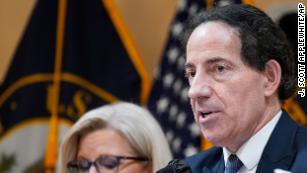Jason Kenney’s recent comments about anti-vaxxers being the author of his downfall were widely seen as self-serving and unhelpful.

Jason Kenney speaks at an event at Spruce Meadows in Calgary on Wednesday, May 18, 2022.
After all, there were many factors in Kenney’s demise. It’s less damaging to his ego to blame sinister forces conspiring against him than to have to confront his own missteps and shortcomings. But suggesting that the UCP has been hijacked by the anti-vaccine movement is just going to scare voters away. Not a great parting gift from an outgoing leader.
However, six weeks after those comments, they now seem much less paranoid and off-base. In fact, maybe the outgoing premier had a point.
Otherwise, it’s hard to explain the odd and creepy fixation on vaccines that’s emerged in the UCP leadership race. Kenney’s warning about “huge” numbers of memberships purchased by those “motivated primarily by their anger and hostility to vaccines” is not so easily dismissed anymore.
Leadership candidate Danielle Smith, for example, has been especially focused on issues around vaccines and vaccine mandates (to which she has previously drawn parallels to the Nuremberg trials). Last week she vowed that if elected, Alberta would not enforce any federal vaccine mandates.
Of course, there are no longer any federal vaccine mandates, and even if there were, there’s nothing for any province to “enforce.” It’s an empty slogan, but it’s an excuse to keep pushing the issue.
Being against vaccine mandates is not the same thing as being anti-vaccine. Although, it’s fair to say that everyone who is the latter is also the former.

© Azin GhaffariUCP leadership candidate Danielle Smith.
Smith’s bona fides on this issue were established well before the leadership campaign. Last year, for example, she hosted on her internet show a pathologist who has claimed that vaccines are killing people by the thousands and an Ontario doctor who has been disciplined for spreading misinformation about vaccines.
It’s quite a commentary on her own judgment that she would undermine vaccination despite the overwhelming evidence of its success while also touting hydroxychloroquine and ivermectin despite the overwhelming evidence of their ineffectiveness against COVID. Unfortunately, there’s an audience for this.
In fact, there’s apparently enough of a constituency for this type of message that other candidates are trying to compete for their own share.
Enter Brian Jean. So far his campaign hasn’t focused too much on these issues, but they must sense the need for a pivot. In a speech earlier this month in Olds, Jean made the claim , “COVID killed … a lot of people. But, so did the vaccine.”
It is, of course, an outrageous and irresponsible thing to say, especially for someone campaigning to be Alberta’s next premier. That he would feel such a statement could help his campaign is quite alarming, indeed.

© Greg Southam
Even Travis Toews, who seemed to reside on the party’s more sensible side, felt compelled to get in on the act. Last week, Toews posted a tweet that included an unattributed quote to “Ottawa” saying that “two doses are no longer enough.” Toews’ response to that was “enough is enough.”
Again, this seems completely out of step with Toews’ campaign as well as his time as finance minister. That he, too, feels the need to pander only serves to reinforce the notion that the anti-vaccine crowd wields considerable clout in the party.
Let’s hope that’s not the case. But even if this all does play well in the leadership race (which, sadly, it appears to), this is a dead-ender as far as a general election is concerned. Not to mention the very troubling implications for Alberta’s public health approach this fall and winter.

© Provided by Calgary Herald
And while Kenney’s own political judgment might be forever tainted, he wasn’t wrong when he urged leadership candidates to “focus on the mainstream concerns of ordinary Albertans which revolve around jobs, economy, strong public services and a strong province.”
For whatever reason, some of his would-be successors are taking a much different — and worrying — approach.
“Afternoons with Rob Breakenridge” airs weekdays 12:30-3 p.m. on 770CHQR and 2-3 p.m. on 630CHED rob.breakenridge@corusent.com Twitter: @RobBreakenridge




.jpg)
:quality(70)/cloudfront-eu-central-1.images.arcpublishing.com/thenational/YTMSIF5ZDCO25SCGBXNEVQMT4U.jpg)








